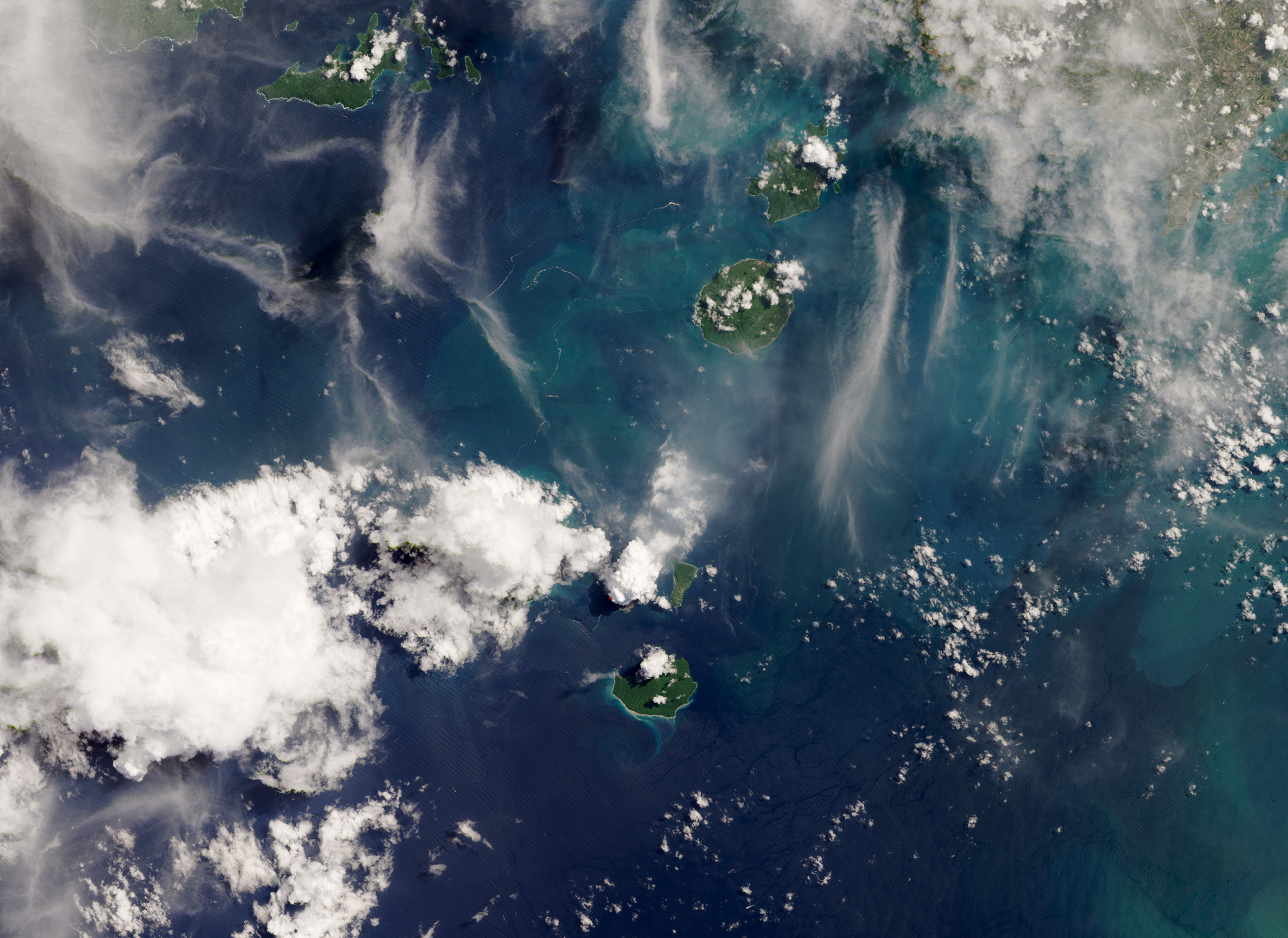Anak Krakatau volcano eruption spotted from space (photo)
The recent rumblings of a famously active Indonesian volcano are visible from space.
The Landsat 8 satellite, a joint effort of NASA and the U.S. Geological Survey, captured a striking photo on Monday (April 13) of Anak Krakatau's latest eruption, which has sent plumes of ash and water vapor billowing into the tropical skies and lava flows coursing into the surrounding turquoise waters.
The natural-color image is overlaid by infrared data gathered by one of Landsat 8's instruments. The infrared measurements highlight a hot spot that may be molten rock, NASA Earth Observatory's Kathryn Hansen wrote in a description of the photo.
Related: Amazing images of volcanoes from space
Anak Krakatau sits in the Sunda Strait between the big Indonesian islands of Java and Sumatra. The volcano's name translates as "child of Krakatau," and for good reason. In 1927, the island rose from the caldera created by the devastating 1883 eruption of Krakatau (also known as Krakatoa), which killed 36,000 people and darkened skies around the world for several years.
Anak Krakatau hasn't unleashed anything on that scale, thankfully. But the volcano has been quite active recently.
The volcano "has displayed these small eruptive bursts periodically through the last few years," Verity Flower, a volcanologist based at NASA's Goddard Space Flight Center in Greenbelt, Maryland, told Hansen. "However, it can also display more destructive activity such as tsunami-triggering eruptions."
Breaking space news, the latest updates on rocket launches, skywatching events and more!
One such eruption occurred on Dec. 22, 2018; the resulting tsunami killed hundreds of people.
- The 11 biggest volcanic eruptions in history
- Earth from space: Landsat satellites' 40-year legacy explained (infographic)
- The 10 most hazardous countries for volcanoes (photos)
Mike Wall is the author of "Out There" (Grand Central Publishing, 2018; illustrated by Karl Tate), a book about the search for alien life. Follow him on Twitter @michaeldwall. Follow us on Twitter @Spacedotcom or Facebook.
OFFER: Save 45% on 'All About Space' 'How it Works' and 'All About History'!
For a limited time, you can take out a digital subscription to any of our best-selling science magazines for just $2.38 per month, or 45% off the standard price for the first three months.

Michael Wall is a Senior Space Writer with Space.com and joined the team in 2010. He primarily covers exoplanets, spaceflight and military space, but has been known to dabble in the space art beat. His book about the search for alien life, "Out There," was published on Nov. 13, 2018. Before becoming a science writer, Michael worked as a herpetologist and wildlife biologist. He has a Ph.D. in evolutionary biology from the University of Sydney, Australia, a bachelor's degree from the University of Arizona, and a graduate certificate in science writing from the University of California, Santa Cruz. To find out what his latest project is, you can follow Michael on Twitter.



